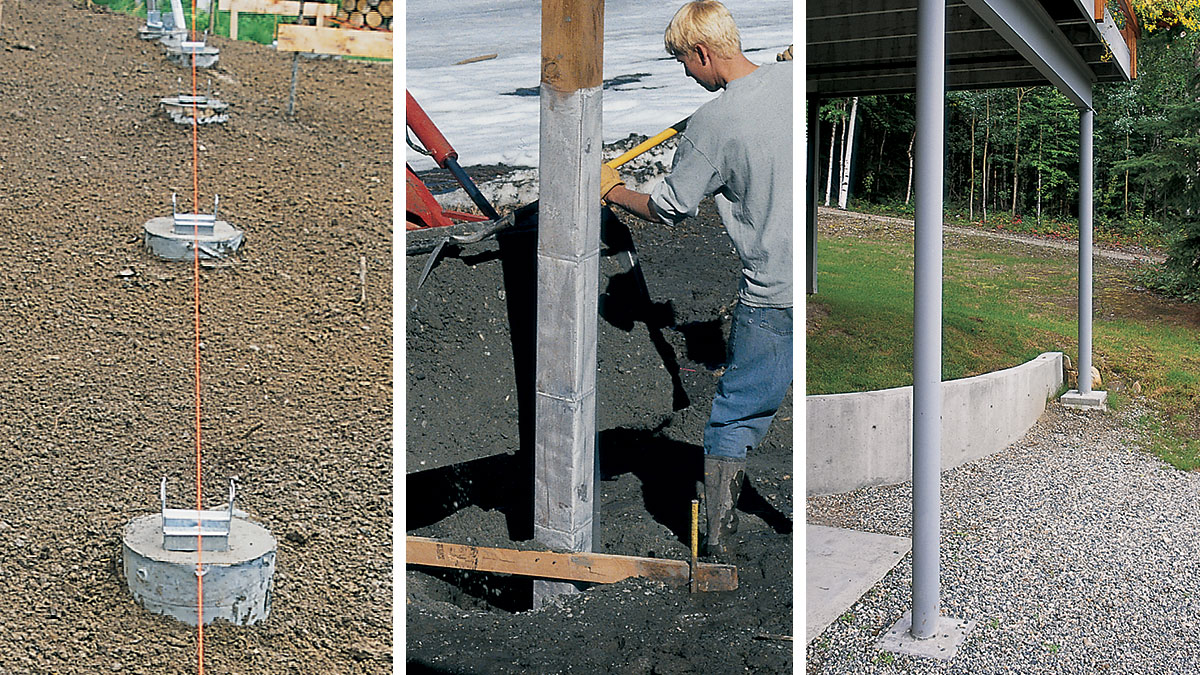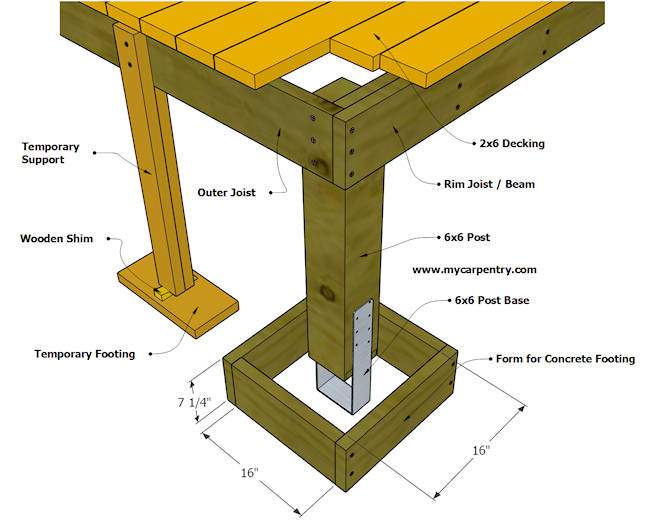Building a Strong Foundation: Unveiling the Keys of Deck Ground
When it involves building a deck, one essential facet that commonly goes overlooked is the foundation or footing. A solid and well-designed deck footing is essential for the stability and long life of any deck framework. In this informative overview, entitled "Building a Solid Foundation: Revealing the Keys of Deck Footing," we will check out the relevance of proper footings, the various kinds offered, and the factors to take into consideration when choosing the appropriate ones for your deck job. In addition, we will certainly supply step-by-step guidelines on just how to prepare and install footings properly. Lastly, we will certainly review the significance of normal maintenance and evaluation to make sure the ongoing safety and durability of your deck footings. Join us as we reveal the keys to constructing a reliable deck foundation.
Significance of Proper Grounds

Among the key factors why correct footings are important is to stop the deck from changing or sinking. Grounds that are not deep adequate or are inadequately created can create the deck to resolve erratically or change with time. This can cause an irregular deck surface area, triggering a tripping danger and jeopardizing the structural integrity of the entire deck.

Additionally, proper grounds also assist to shield the deck from moisture damage. By boosting the deck framework in the air, footings protect against the timber from coming into direct call with dampness, decreasing the risk of rot and degeneration.
Sorts Of Deck Footings
The choice of appropriate deck grounds is a vital facet in ensuring the stability and longevity of a deck framework. There are numerous kinds of deck grounds that can be used, each with its very own advantages and considerations.
One typical sort of deck ground is the concrete pier ground. This involves digging openings in the ground and putting concrete to produce a solid structure for the deck. Concrete piers are versatile and can be used in a variety of soil problems, making them a prominent option for lots of deck tasks.
An additional option is the helical pier ground. This sort of footing consists of a steel shaft with helical plates that are screwed into the ground. Helical piers are perfect for locations with bad dirt conditions or areas vulnerable to high water tables. They provide exceptional stability and can be gotten used to the desired elevation.
For decks constructed on shallow or flat structures, a superficial footing might be proper. Shallow grounds are generally made of concrete and are placed straight on the ground surface area. They are best matched for smaller sized decks or areas with stable dirt problems.
Elements to Consider When Selecting Footings
When selecting footings for a deck, it is essential to carefully consider a number of elements that will ultimately determine the stability and resilience of the structure. Larger decks with numerous levels or heavy loads require even more considerable footings to give ample support. By very carefully thinking about these elements, home owners can make educated decisions when picking footings for their deck, ensuring a long lasting and steady structure.
Steps to Prepare and Install Footings
To prepare and mount grounds for a deck, it is critical to comply with a systematic technique that makes sure security and toughness. The primary step is to determine the size and variety of footings called for based on the deck style and regional building ordinance. It is essential to dig deep into the soil to the needed depth, guaranteeing that the base of the ground rests on undisturbed dirt or compacted crushed rock. The following step includes positioning a concrete kind tube or ground kind in the red, making certain it is level and focused. The form must expand over the ground level to stop water damages. Afterwards, reinforcing steel bars, or rebar, are put inside the kind to offer added strength. The rebar ought to be effectively secured and spaced according to the engineering requirements. Once the form and rebar are in location, concrete can be put into the form, filling it to the top. The concrete ought to be combined and smoothed utilizing a shovel or a concrete vibrator. The concrete requirements to heal for the recommended period before any additional building takes area. By adhering to these actions meticulously, one click for more can make certain that the footings are properly prepared and installed, providing a solid foundation for the deck structure.
Upkeep and Assessment of Deck Footings
To make sure the long-lasting stability and safety of your deck, normal maintenance and extensive evaluations of the deck footings are important. The deck grounds work as the foundation of your deck, sustaining the weight and tons of the whole structure. With time, these grounds can experience wear and tear because of different variables such as weather, dirt movement, and the all-natural aging process. It is crucial to do routine maintenance to recognize any kind of prospective issues and address them without delay.
Normal maintenance ought to consist of visual assessments of the grounds, searching for indications of damages or wear and tear. These can consist of splits, moving or sinking of the grounds, or indications of water damages. Furthermore, it is vital to check the stability of the footings by applying pressure or carrying out tons examinations if required.
In enhancement to aesthetic assessments, it is advised to schedule expert examinations every couple of years. Specialists can assess the structural integrity of the footings much more precisely and supply experienced recommendations on any necessary repairs or replacements.
Furthermore, appropriate upkeep additionally entails taking safety nets to shield the grounds (Deck Footings). This can consist of using water resistant finishes to stop water damage, guaranteeing appropriate drainage to stay clear of too much wetness, and normal cleansing to get rid of debris and avoid buildup
Verdict
To conclude, correct deck footings play a vital function in guaranteeing the stability and longevity of a deck. By recognizing the various kinds of grounds available and taking into consideration variables such as soil problems and regional building codes, property owners can make informed choices when choosing grounds for their deck. Furthermore, regular upkeep and inspection of deck grounds is essential to determine any type of possible problems and ensure the safety of the framework.
In this interesting guide, labelled "Building a Strong Structure: Unveiling the Tricks of Deck Ground," we will discover the significance of proper grounds, the various types readily available, and the elements to consider when selecting the right ones for your deck job.One usual type of deck footing is the concrete pier footing.To ensure the long-lasting security and safety of your deck, routine upkeep and complete inspections of the deck footings are essential.In final thought, proper get redirected here deck footings play a crucial role in making sure the security and durability of a deck. By recognizing the different types of footings offered and considering aspects such as special info dirt conditions and local building codes, house owners can make educated decisions when selecting grounds for their deck.